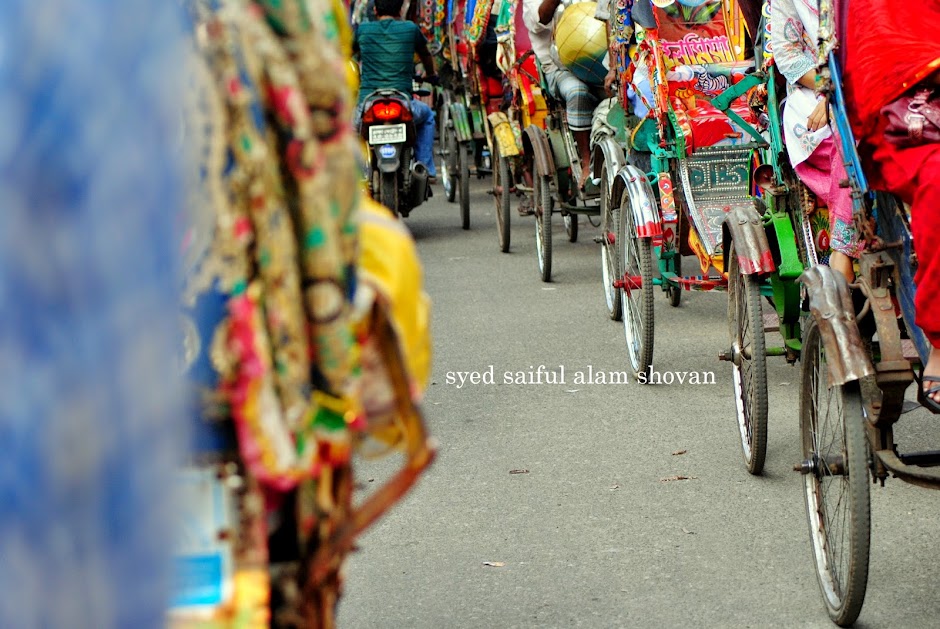Economic and other impact of ban on NMT pullers
Syed Saiful Alam
The HDRC study found various impacts on NMT pullers (rickshaws, vans and handcarts)
when comparing their situation before and after the ban. These include:1. Average monthly net income of rickshaw pullers decreased by 32%, from3,834 to 2,600 taka (see Table 1 and Figure 1 below). Overall, income forNMT pullers declined by 34%.2. The amount of money sent back to their villages also declined following theban. Before the ban, on average rickshaw pullers spent 64% of net incomeand sent the rest (36%) to his village.
Following the ban, the amount spent inDhaka decreased by 27%, while the amount sent to the village decreased by41%. Similar patterns follow for other NMT pullers (see Table 1 and Figure2).
Pullers compensated for loss of income by reducing food consumption,particularly of fish, meat, and cooking oil: for NMT pullers overall, 85.9%decreased their consumption of fish, 87.5% decreased consumption of meat,65.1% decreased consumption of cooking oil, and over half (55.3%) decreasedconsumption of vegetables.
There was an increase in the number of income earners in the family from 1.24to 1.37. This suggests that some children have been taken out of school tocompensate for lost income, or that the burden on wives of the pullers havefurther increased as they must earn money as well as do all the family andhousehold labor
Average number of working days per month for NMT pullers increased by1.1 days (from 23.67 to 24.78 days a month), and for rickshaw pullers by 1.3days (from 23.18 to 24.44 days a month).
Average number of working hours per day also increased, from 10.33 to 10.97hours overall, and from 10.16 to 10.70 for rickshaw pullers.
More rickshaw pullers worked full-day than half-day shifts: 60.5% after theban, and 56.7% prior to the ban; the figures overall were 65.1% after the banand 61.5% prior to it.
Only about 5% of pullers reported a second income, and that second incomewas insufficient to compensate for the loss of income from the ban.
Almost all the pullers (81.6% overall) were affected by loss of income; 86.1%of van pullers reported decreased income.
Although HDRC recommends training in driving of MT for displaced pullers,only 1.6% of pullers overall suggest that they be provided MT driver training,while 55.9% asked for alternative rehabilitation and 31.6% suggestedconstruction of special lanes for NMT. Similarly, while only 6% wanted analternative profession in MT, 36% would like to take on petty trading, 27%return to agriculture, and 23% take on day labour.
Only 4% of pullers supported NMT withdrawal on other major arterial roads;fears expressed by them included hardship for the pullers and their families,and concern that the move would lead to further deterioration of the law andorder situation in the country in general and Dhaka in particular.
source: Improving Dhaka’s Traffic Situation:Lessons from Mirpur Road
Syed Saiful Alam
Save the Environment movement
